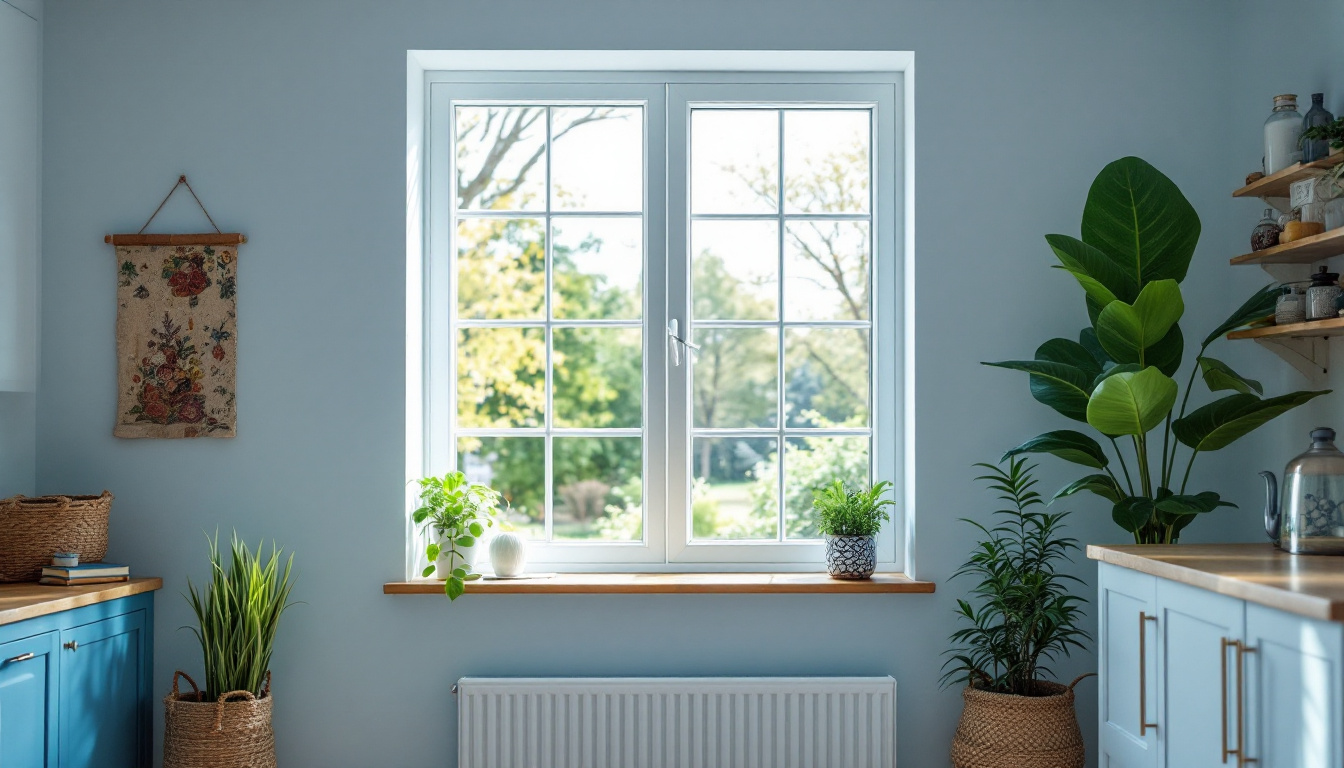Understanding the cost of casement window installation can help homeowners make informed decisions when upgrading their homes. Casement windows, known for their side-hinged design that opens outward like a door, offer excellent ventilation and energy efficiency. However, the installation costs can vary significantly based on multiple factors including size, material, and labor requirements. This comprehensive guide breaks down everything you need to know about casement window installation costs in 2025.
Average Casement Window Installation Costs
The cost of installing casement windows varies widely depending on several key factors. Understanding these price ranges can help you budget effectively for your window replacement project.
Basic Cost Breakdown
On average, homeowners can expect to pay between $400 and $1,200 per casement window installation, including both materials and labor. Entry-level vinyl casement windows typically start around $400-600 installed, while mid-range options cost $600-900. Premium casement windows made from wood, fiberglass, or aluminum can range from $900 to $1,500 or more per window.
For a standard home with 10 windows, the total project cost typically falls between $4,000 and $12,000. However, high-end installations with premium materials and custom features can push costs upward of $15,000 for a whole-house project.
Material Cost Variations
The window frame material significantly impacts the overall cost of casement windows:
- Vinyl: $300-700 per window (most affordable option with good energy efficiency)
- Aluminum: $450-900 per window (durable but less energy efficient)
- Fiberglass: $600-1,100 per window (excellent durability and energy performance)
- Wood: $700-1,300 per window (traditional aesthetic with higher maintenance)
- Composite: $600-1,200 per window (combines wood appearance with lower maintenance)
These prices reflect the window unit alone, before installation labor costs are factored in.
Labor Cost Factors
professional installation typically costs between $100 and $300 per window, depending on complexity and local labor rates. Standard installations in pre-existing openings fall on the lower end of this range, while installations requiring structural modifications cost more.
Labor costs increase significantly when the project involves:
- Creating new window openings
- Expanding existing openings
- Addressing structural issues
- Installing in difficult-to-access locations
- Working with historical homes requiring special considerations
Factors That Influence Casement Window Installation Costs
Several key factors can significantly impact the final price of your casement window installation project. Understanding these variables helps explain price differences between quotes from different contractors.
Window Size and Configuration
Larger casement windows naturally cost more than smaller ones due to increased material requirements. Standard-sized casement windows (typically 24″ x 36″ to 36″ x 60″) are more affordable than custom sizes, which can add 15-30% to the base price.
Configuration also matters—single casement windows cost less than double casement windows or architectural combinations that pair casement windows with picture windows or other styles. Each additional operational sash increases both material and labor costs.
Glass Package Options
The type of glass you select significantly impacts both price and energy performance:
- Double-pane glass: Standard in most modern casement windows
- Triple-pane glass: Adds $100-300 per window but offers superior insulation
- Low-E coatings: Adds $40-100 per window but reduces energy loss
- Gas fills (argon or krypton): Adds $50-150 per window for improved thermal performance
- Impact-resistant glass: Adds $200-500 per window for storm protection
Energy-efficient glass packages may qualify for rebates and incentives that offset their higher upfront costs while delivering long-term energy savings.
Installation Complexity
The complexity of your installation significantly affects labor costs. Replacing existing casement windows with new ones of the same size is relatively straightforward. However, converting from another window style to casement windows often requires structural modifications that increase costs.
Other factors that increase installation complexity include:
- Multi-story installations requiring scaffolding or special equipment
- Presence of asbestos or lead paint in older homes
- Water damage or rot requiring structural repairs
- Custom trim work or interior finishing
- Difficult access points with landscaping or architectural obstacles
Regional Cost Variations
Window installation costs vary significantly by location due to differences in labor rates, building codes, and climate requirements. Understanding these regional variations helps set realistic budget expectations.
Geographic Price Differences
Installation costs tend to be highest in major metropolitan areas and coastal regions, where labor rates and cost of living are higher. For example, casement window installation in New York City or San Francisco might cost 30-50% more than the same installation in smaller Midwestern cities.
Regional climate considerations also impact costs. In northern regions with harsh winters, higher-performance windows with better insulation are often required by building codes, increasing the base cost. Similarly, coastal areas prone to hurricanes may require impact-resistant glass, adding to the overall expense.
Seasonal Pricing Fluctuations
Window installation costs often fluctuate seasonally. Many window companies offer discounts during slower periods, typically late fall through winter in most regions. Scheduling your installation during these off-peak times can result in savings of 5-15% compared to peak summer installation rates.
However, weather conditions during winter installations can sometimes lead to complications that offset these savings, particularly in regions with severe winter weather. Spring and fall generally offer the best balance of reasonable pricing and favorable installation conditions.
Cost-Saving Strategies for Casement Window Installation
While quality casement windows represent a significant investment, several strategies can help reduce costs without compromising on performance or aesthetics.
Rebates and Tax Incentives
Energy-efficient casement windows often qualify for various rebates and incentives that can significantly offset installation costs:
- Federal tax credits: Up to 30% of the cost of ENERGY STAR certified windows (maximum $600)
- Utility company rebates: Many local utilities offer $25-100 per window for energy-efficient models
- State-specific incentives: Vary by location but can provide substantial additional savings
- Manufacturer rebates: Seasonal promotions from major window brands can save $50-100 per window
To maximize these savings, look for windows that meet ENERGY STAR requirements for your specific climate zone and keep documentation of your purchase and the windows’ energy performance ratings.
Strategic Project Timing
Timing your window installation strategically can lead to significant savings:
- Schedule during manufacturer promotions (typically January-March or September-November)
- Request quotes during the off-season when contractors are less busy
- Bundle multiple windows into one project to negotiate volume discounts
- Plan ahead to avoid emergency replacements that command premium pricing
Many window companies offer financing options with promotional periods of 0% interest, which can make larger projects more manageable without increasing the overall cost.
Long-Term Value Considerations
When evaluating casement window costs, it’s important to consider not just the upfront price but also the long-term value these windows provide to your home.
Energy Savings Potential
high-quality casement windows can reduce energy bills by 10-25% annually compared to older, inefficient windows. This is particularly true for casement windows, which typically offer better air sealing than double-hung or sliding windows due to their compression seal design.
For a home spending $2,500 annually on heating and cooling, this can translate to savings of $250-625 per year. Over the 20-30 year lifespan of quality windows, these savings can offset a significant portion of the initial installation cost while providing improved comfort.
Impact on Home Value
Window replacement consistently ranks among the home improvements with the best return on investment. According to industry data, homeowners typically recoup 70-80% of casement window installation costs through increased home value.
Beyond the direct financial return, new casement windows also enhance curb appeal and can help homes sell faster in competitive real estate markets. The improved aesthetics, energy efficiency, and functionality serve as strong selling points that distinguish your home from others with outdated windows.
Choosing the Right Installer
The quality of installation significantly impacts both the performance and longevity of casement windows. Proper installation ensures energy efficiency, smooth operation, and protection against water infiltration.
Evaluating Contractor Quotes
When comparing installation quotes, look beyond the bottom-line price to understand what’s included:
- Detailed scope of work (removal, disposal, installation, finishing)
- Quality of materials (window brand, glass package, hardware)
- Warranty coverage (both manufacturer and labor warranties)
- Timeline for completion
- Payment schedule and financing options
Be wary of quotes that are significantly lower than others, as they may exclude important aspects of the installation or use lower-quality materials. Request itemized quotes that break down material and labor costs separately for easier comparison.
Importance of Professional Installation
While DIY installation might seem like a way to save money, professional installation offers significant advantages for casement windows:
- Proper sealing and insulation that maximizes energy efficiency
- Precise adjustment of operating hardware for smooth function
- Manufacturer warranty protection (many warranties require professional installation)
- Code compliance and permit management
- Expertise in handling unexpected issues like structural damage
The cost difference between professional installation and potential repairs from improper DIY installation often makes professional installation the more economical choice in the long run.
Conclusion
Casement window installation represents a significant home improvement investment, with costs typically ranging from $400 to $1,200 per window installed. While this initial expense may seem substantial, the long-term benefits—including energy savings, improved comfort, enhanced aesthetics, and increased home value—often justify the investment.
By understanding the factors that influence casement window costs and utilizing available rebates and incentives, homeowners can make informed decisions that balance budget considerations with quality and performance. Whether you’re replacing a single window or undertaking a whole-house window replacement project, this knowledge helps ensure you receive the best value for your investment in casement windows.





